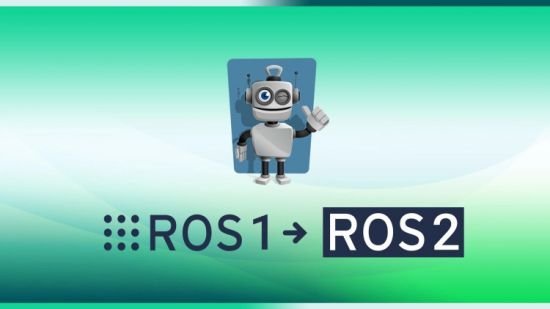
Genre: eLearning | Language: English
At the end of this class – starting from your ROS1 experience – you will be able to create complete ROS2 applications, and migrate a ROS1 code base to ROS2.
IMPORTANT: If you’re a complete beginner and have no knowledge in Robot Operating System at all, please don’t take this class. You must know how to work with core concepts (nodes, services, parameters, launch files) to understand the class.
Please read the entire description to know what to expect from this class ?
→ First of all, Why this class?
Well, if you already know ROS1, you might want to start learning ROS2, but… not from scratch.
And/or if you’re currently working on a ROS1 project, you might be looking into a way to port it to ROS2.
I myself was a ROS1 developer before learning ROS2. What I was looking for was simply some documentation of how I could quickly get up to speed with ROS2, as I already knew ROS1. I didn’t find any good resources, so I had to go through all of the beginner documentation for ROS2.
Now that I use ROS2 every day, I’ve decided to create the class I wish I had when I first started. So you don’t have to spend days and days studying ROS2, find out what are the differences, and what you should do to switch from ROS1 to ROS2.
In this class I won’t start from the very beginning of each ROS concept, since you already know them. I’ll just focus on the most important points that will allow you to write ROS2 applications in no time, thanks to your pre-existing ROS1 knowledge.
And I also understand the need to know what to do with an existing ROS1 project, now that ROS2 is starting to get bigger and more stable. What I’ll teach you is what I personally do with my own projects. I don’t “invent” a method, I create it from real practical needs I have and other people have.
My goal is that you get the main take-aways you really need, in a short period of time.
At the end of the class, you will be able to:
Write your own ROS2 project
Clearly understand the main differences between ROS1 and ROS2
Work with ROS1 and ROS2 at the same time
Migrate a ROS1 project to ROS2
→ Class structure
This class is divided into 2 main parts.
First, you’re going to learn how to write ROS2 programs, using your ROS1 experience. We’ll start from an existing ROS1 application, and step by step, we’ll go through every core concept and see how to translate the app in ROS2. Note that we won’t dive into advanced functionalities, we’ll stick to the ROS2 core functionalities.
Then, it’s migration time! (If you already have some basics in ROS2, you might go quickly with the first part, and then focus on this migration part.)
You will get answers to some of the questions you may have: when to switch to ROS2? Which ROS1/ROS2 distribution to use now and in the future? Etc.
I will give you a process to migrate your ROS1 code base to ROS2. Also you’ll see how to run a ROS1 application along with a ROS2 application, communicating between them thanks to the ros1_bridge package.
And finally: a complete project for you to practice on migrating a code base and writing ROS2 code. I’ll give you a project I made with Turtlesim in ROS1, and you’ll migrate it to ROS2.
→ What if you already know ROS1 and have some ROS2 basics?
Well, you can still benefit from the class . You can skim through the first part (as a refresher) and then go to the second part, which can be seen as a complete mini-class by itself.
This second part + the final project will give you the answers you need to start working with both ROS1 and ROS2, and also to migrate your own code base.
→ How do I teach?
My method is quite simple:
Step by step
Going to the point
Practice over theory, although a little bit of theory doesn’t hurt when combined with practice
My experience with Robot Operating System is very practical. I actually used it to build a robotic arm that is now on the market. So I had no other choice than being practical and going to the point.
And that’s the way I want to teach you, also giving you the best practices right from the start, to make you a better ROS developer.
This class is for:
Students, Engineers, Researchers, Teachers, Developers, Hobbyists.
ROS1 developers who want to learn ROS2, not from scratch, but by comparing ROS2 with ROS1
ROS1/ROS2 developers who want to migrate a ROS1 codebase into ROS2
ROS developers who want to be able to work with both ROS1 and ROS2.
This class it not for you if:
You don’t have any knowledge in ROS1
You’re already an expert in both ROS1 and ROS2.
You’re just getting started with programming and Linux.
Pre-requisites for this class:
You have a fair understanding in ROS1 and can write simple ROS1 programs
Ubuntu 20.04 installed on your computer (dual boot or virtual machine) + you know how to use basic commands in a terminal
Programming basics in Python and/or C++
Some basics in Object Oriented Programming (OOP) are welcome, although not 100% mandatory
Password/解压密码www.tbtos.com
转载请注明:0daytown » Learn ROS2 as a ROS1 Developer and Migrate your ROS Projects